When it comes to keeping your dog on bed rest, the key lies in creating a conducive environment that facilitates healing and prevents setbacks.
But what steps should you take to make sure your furry companion’s recovery is smooth and successful?
Let’s explore practical strategies and essential tips that can help you navigate this critical period with care and expertise.
Key Takeaways
- Create a cozy rest area with bedding and a safe crate for comfort and security
- Provide mental stimulation through interactive toys and puzzles to prevent boredom
- Ensure proper rest and recovery by following a consistent routine and vet’s advice
- Manage activity levels by limiting physical exertion, engaging in mental activities, and monitoring progress
Setting Up a Cozy Rest Area
To create a comfortable rest area for your dog, select a quiet and cozy spot in your home where your furry friend can relax and recuperate. Choose a location away from high traffic areas to minimize disturbances and guarantee a peaceful environment for your dog’s rest. Setting up a crate can provide a safe and secure space for your dog to unwind. Line the crate with soft and supportive bedding to prevent pressure sores and offer a snug resting place.
When arranging the rest area, pay attention to ventilation and maintain a comfortable temperature to keep your dog at ease. Sufficient airflow will help regulate the temperature and prevent the area from becoming too stuffy. Placing favorite toys or comforting items within reach can help keep your dog relaxed and entertained during rest periods. Additionally, make easy access to fresh water and position food bowls nearby to provide convenient feeding options for your dog without causing unnecessary movement.
Providing Mental Stimulation
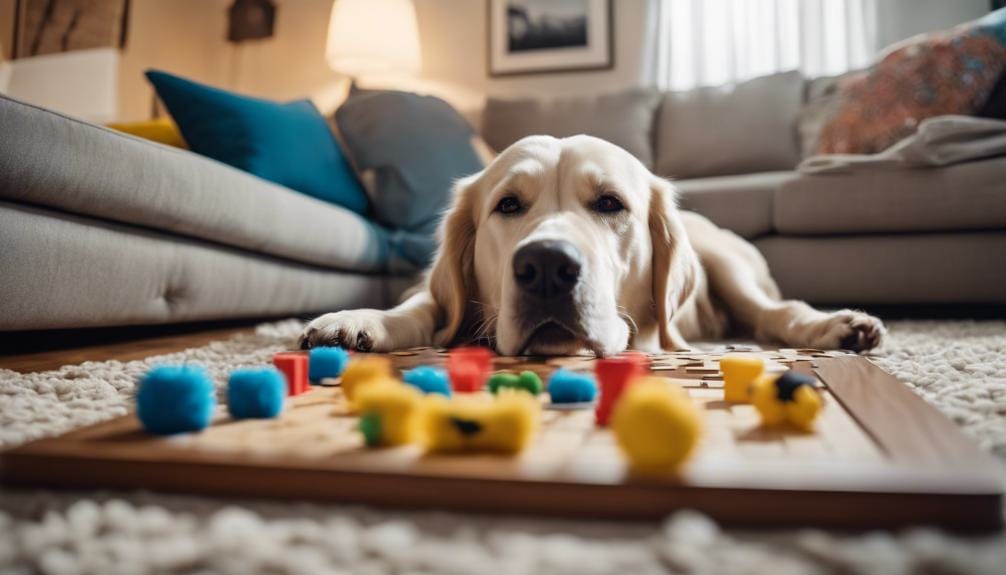
When keeping your dog on bed rest, providing mental stimulation is crucial for their overall well-being and recovery. To engage your dog’s mind, consider using interactive puzzle toys that require problem-solving skills. These toys can help prevent boredom and maintain your dog’s interest in their confined environment. Remember to rotate the toys regularly to keep the activities fresh and exciting for your furry friend.
In addition to puzzle toys, food-dispensing toys can provide mental stimulation and entertainment for your dog. These toys encourage your dog to work for their food, keeping them mentally active while on bed rest. Reward-based toys, like Kong toys filled with treats, can also be beneficial in keeping your dog engaged and motivated during this period.
It’s essential to monitor your dog’s progress with the toys to make sure they’re benefiting from the mental stimulation provided. Observe how your dog interacts with the toys and adjust accordingly to keep them engaged. By incorporating a variety of toys and activities that engage your dog’s mind, you can help prevent boredom, maintain their interest, and support their overall well-being while on bed rest.
Ensuring Proper Rest and Recovery
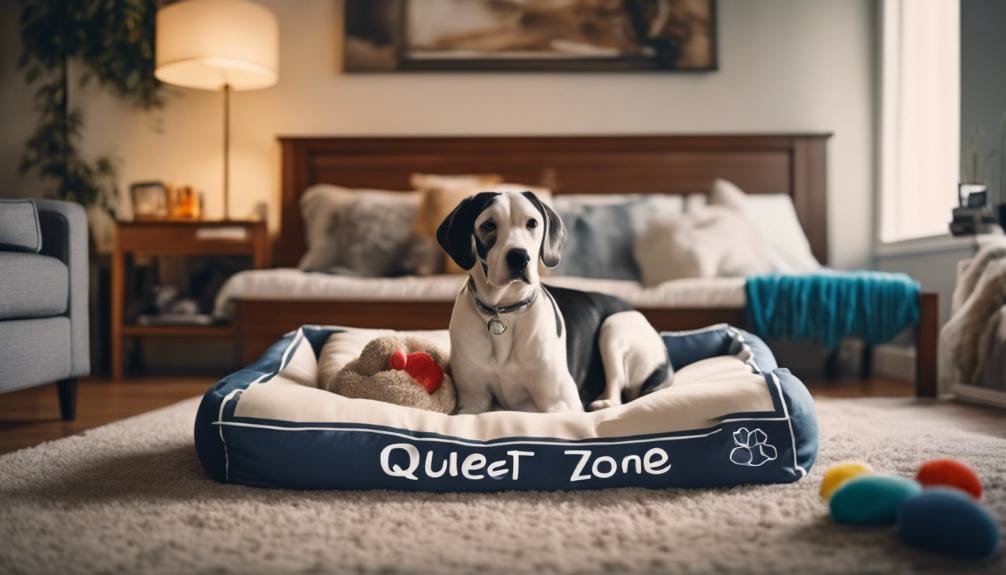
Proper rest and recovery for your dog on bed rest are essential components in facilitating a successful healing process. To help keep your dog on crate rest comfortable and promote a smooth recovery period, it is vital to focus on providing adequate rest, proper nutrition, and mental stimulation. Here are some key factors to take into account:
| Aspect | Importance | Tips |
|---|---|---|
| Food and Water | Essential for healing | Make sure easy access to fresh water and a balanced diet |
| Chew Toys | Prevent boredom and provide mental stimulation | Choose safe, durable toys to keep your dog entertained |
| Daily Routine | Promotes stability and relaxation | Stick to a consistent schedule for meals and breaks |
| Recovery Period | Allows the body to heal properly | Follow the vet’s recommendations for a successful recovery |
| Physical Exertion | Avoids unnecessary strain | Monitor and limit any activities that may strain your dog |
Managing Activity Levels

Restricting your dog’s physical activity is essential in managing their recovery and promoting healing while on bed rest. Here are some key points to help you manage your dog’s activity levels effectively:
- Crate rest for dogs: Utilize a crate or a confined area to limit your dog’s movement and make sure they stay resting comfortably. This can prevent them from being too active and aid in their recovery process.
- Daily food ration: Be mindful not to overfeed your dog during this period of reduced activity. Adjust their daily food ration to match their decreased energy expenditure to avoid weight gain, which could hinder their recovery.
- Helping your dog stay happy: While limiting physical activity is essential, it’s also important to keep your dog mentally stimulated and happy. Engage them with interactive toys, puzzle games, and short training sessions to provide mental enrichment without overexerting them physically.
Recommended Products for Comfort
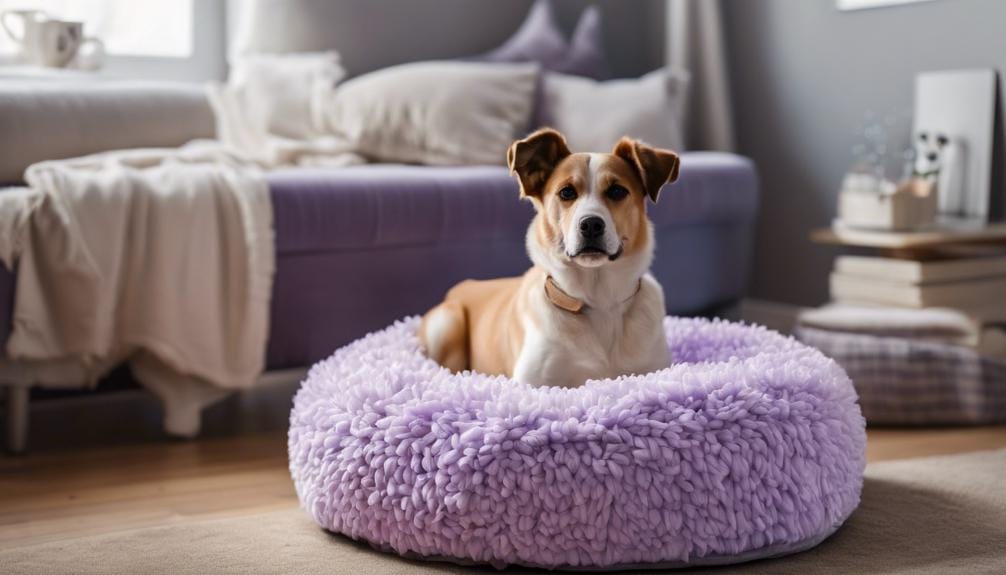
Enhance your dog’s comfort during bed rest by incorporating recommended products that cater to their physical and emotional well-being. To help your dog rest more comfortably, you can make sure to provide an orthopedic dog bed with memory foam. This type of bed offers added support for your dog’s joints and can help alleviate any discomfort they may be experiencing. Additionally, giving your dog cozy blankets or a heated pad can help keep them warm and cozy while they rest.
Elevated dog beds are another great option to think about. These beds can help reduce pressure on your dog’s joints and promote better circulation, which is essential for their recovery. To create a soothing environment for your dog, you may want to look into calming aids such as lavender-scented pillows or calming sprays.
When it comes to maintaining cleanliness and hygiene in your dog’s resting area, think about using waterproof bed protectors or washable bed covers. These products can make it easier to clean up any messes and make sure that your dog’s recovery room stays clean and comfortable. By incorporating these recommended products, you can help provide your dog with a comfortable and supportive environment during their bed rest period.
Frequently Asked Questions
How Do I Keep My Dog Occupied on Bed Rest?
To keep your dog occupied, provide interactive puzzle toys for mental engagement. Rotate toys to prevent boredom. Use food-dispensing toys for stimulation. Engage in training for mental exercise and bonding. Play soothing music for a relaxing environment.
What Does Strict Rest Mean for a Dog?
Strict rest for a dog involves limiting movement and confining them to a crate or designated area. This prevents activities like running or jumping, important for conditions like spinal injuries or post-surgery recovery. Supervision guarantees compliance and aids healing.
How Do I Keep My Dog Rested?
To keep your dog rested, limit activity, use a recovery crate, offer mental stimulation, monitor behavior for discomfort, and follow vet instructions. These steps will help guarantee your dog gets the rest needed for proper recovery and healing.
Can I Cuddle My Dog on Crate Rest?
You can cuddle your dog on crate rest for emotional support. Guarantee gentle handling to prevent sudden movements. Limit sessions to short durations to avoid overstimulation. Consult your vet for guidance based on your dog’s condition.
Conclusion
To sum up, keeping your dog on bed rest requires creating a comfortable environment, providing mental stimulation, ensuring proper rest and recovery, and managing activity levels.
By following these guidelines and utilizing recommended products for comfort, you can help your furry friend heal and recover effectively.
Remember to stay vigilant, monitor progress, and consult with your vet for the best care during this recovery period.
Your dog’s well-being is worth the effort and attention to detail.

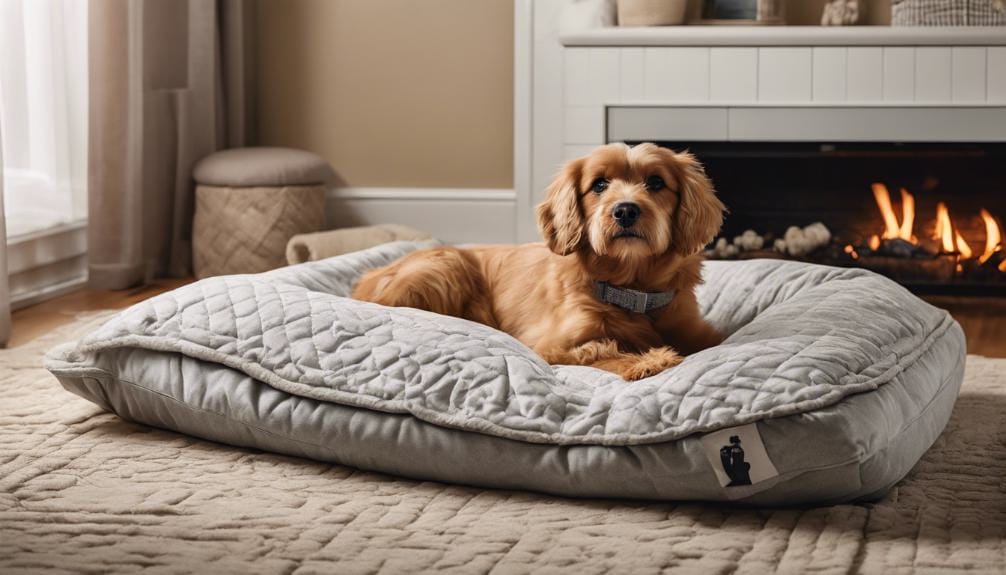
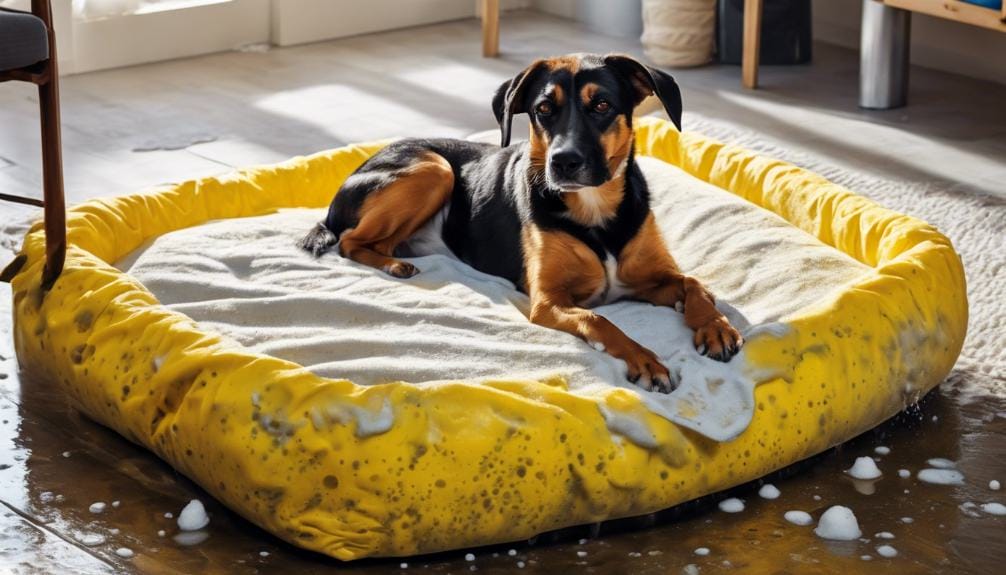
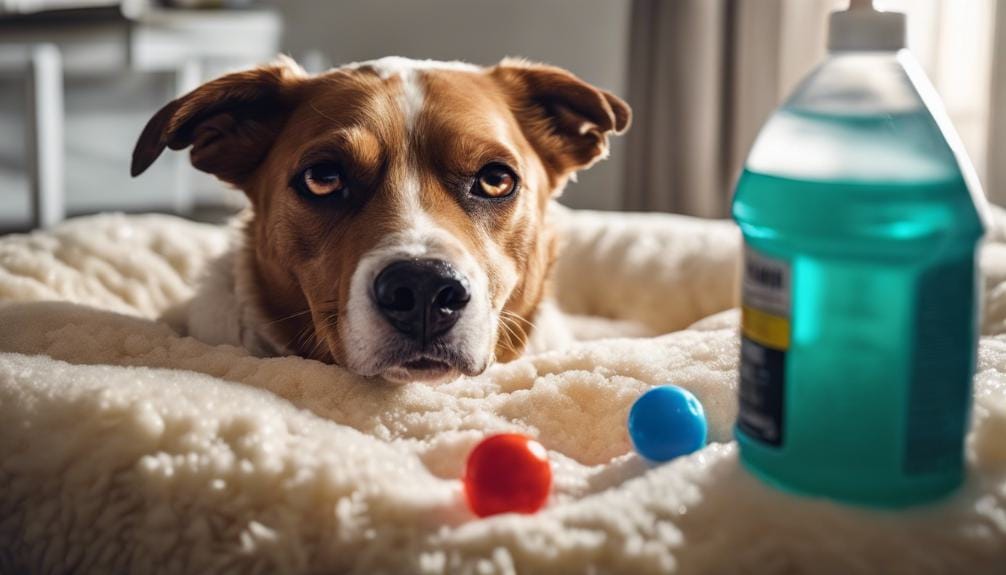
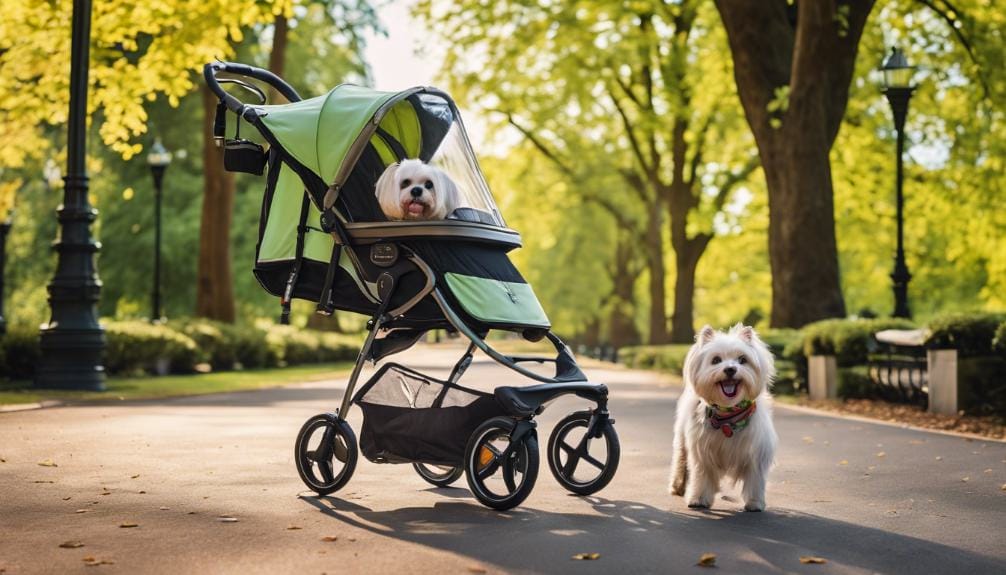
Leave a Reply
You must be logged in to post a comment.